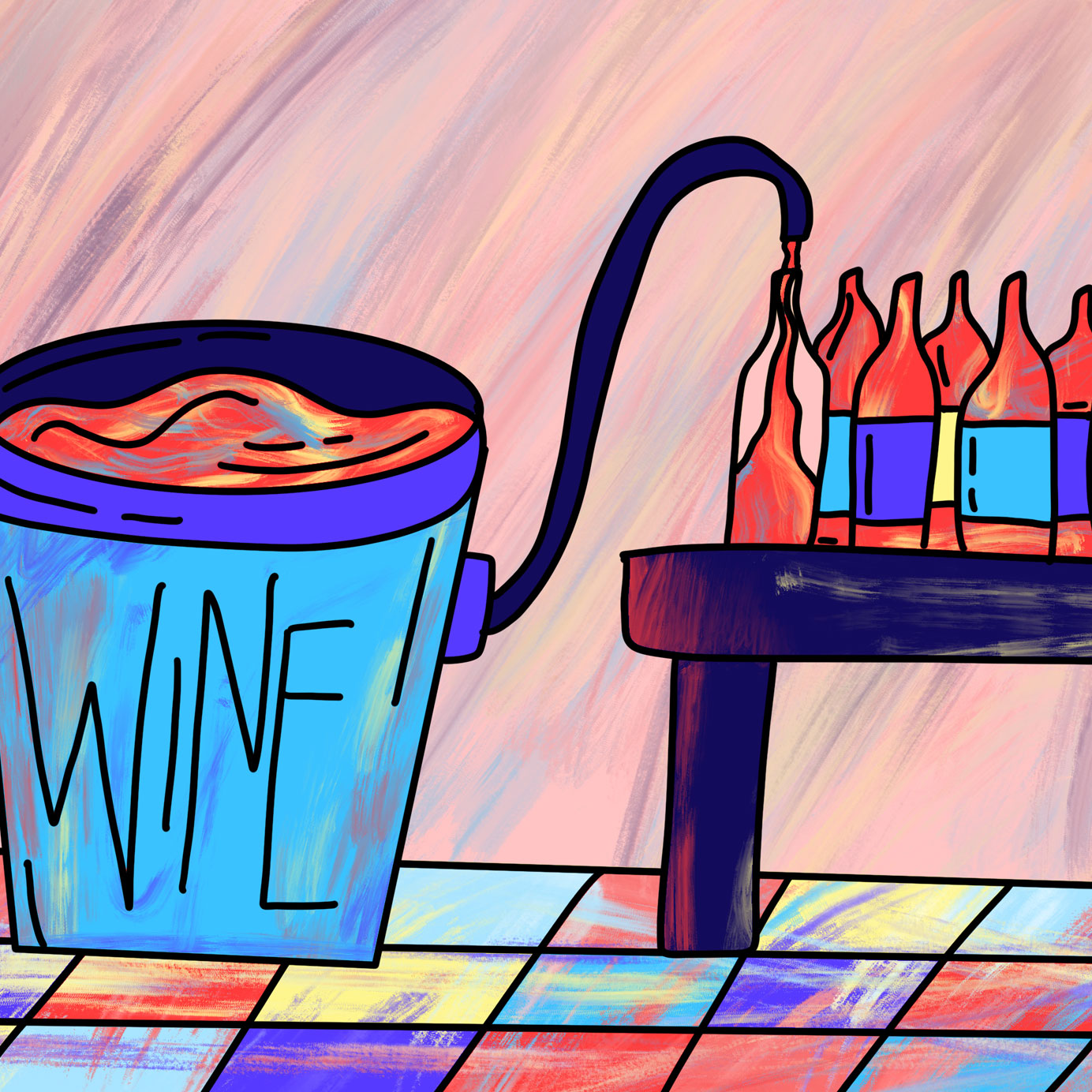Buying quality wine has never been more fraught. Global food and beverage fraud is reportedly a $40 billion industry. (Art theft, on the other hand, is valued at $6 billion per year.) The Interprofessional Council of Bordeaux Wine believes that 30,000 bottles of counterfeit imported wine are sold every hour in China alone.
For wine collectors, it’s an enormous risk. Bottles of first-growth Bordeaux, such as Château Lafite Rothschild, Mouton-Rothschild, and Latour, as well as expensive Burgundy like Domaine Romanée Conti, have been duplicated for decades. Here’s how it might happen: Counterfeiters buy empty bottles from top producers for $1,000 or more on the black market. They then re-fill and cork these bottles and pass them off to unsuspecting buyers
Now, as the size and thirst of global wine consumers are skyrocketing, counterfeiting is not limited to super-high-end wines. Even small, relatively inexpensive labels are at risk.
Savvy winemakers like Frank Cornelissen are not sitting idly by. Cornelissen’s natural Sicilian wines, grown on 46 acres of volcanic soil, have become immensely popular in recent years. In 2014, Cornelissen decided to tackle counterfeiting head on.
“Limited production wines are always at risk,” Cornelissen says. “We saw that the technology was available, so why not use it?”
Now, Cornelissen’s wine labels feature unique RFID and QR codes that buyers can scan with their smartphones. He also uses a distinctive black plastic cork that forms a perfect seal with the glass neck of the bottle, while still allowing just the right amount of air to enter the bottle.
“The cork is more complicated than normal, which is harder to fake,” he says.
Ann Colgin, of California cult label Colgin Cellars, licensed Kodak’s Traceless system. It imprints labels with a tasteless, odorless marker that can only be read with a proprietary handheld scanner that is made exclusively by Kodak.
Legendary Super Tuscan producer Sassicaia began embossing bottles with its estate name, Tenuta San Guido, after 12 people were arrested for producing 20,000 counterfeit bottles of the 1994 vintage. Each bottle was worth about $1 million. The company also began looking into embedding its bottles with microchips to add an additional layer of authenticity.
Italy has instituted an array of labels and seals for all its DOC and DOCG wines. These labels include holograms, watermarks, and unique registration numbers that can be searched for on some appellation websites. Physically and ideologically, they resemble new currency.
You may think that the wine from rare vintages by these legendary labels may speak for itself, but many of the top forgeries can fool even the most well-known wine tastemakers. Critic Robert Parker infamously awarded 100 points — his highest grade — to a magnum of 1921 Château Petrus, owned by fakester Hardy Rodenstock. Petrus later claimed it never produced a 1921 bottling in magnum.
For this reason, wine merchants and buyers need to have their own systems to weed out fakes as well.
Jamie Wolff, a partner and wine buyer at Chambers Street Wines in Manhattan, has seen his fair share of dubious wines over the years. In the 1990s, Wolff worked at Christie’s as a wine buyer.
“I’ve been working for 30 years in the New York wine scene, so if I don’t know you by now, I’m already suspicious,” he says. “We’ll visit a potential seller’s cellar and taste a few things, and have a look at the bottles to see if everything checks out.” Wolff adds that referrals are another way they find a potential seller. “Business is founded on relationships,” he says.
If you’re looking to do your own wine investing and don’t want to be duped, experts suggest abiding by an old saying: “Buy the seller.” In other words, do your due diligence on the person selling you the bottle. Check online to see if the seller has a bad reputation, research the provenance of the bottle extensively, and avoid buying single bottles if you can.
“If they’re coming to you with just a single bottle or two of [Chateau] Latour, that’s a red flag,” says Wolff, who considers that one surefire way to spot a fake wine that “fell off a truck.” If you’re still unsure, Wolff recommends going through Christie’s or another big auction house to help you source rare bottles.
But remember, Wolff says (and it’s something Robert Parker knows all too well): “No one is invulnerable.”
